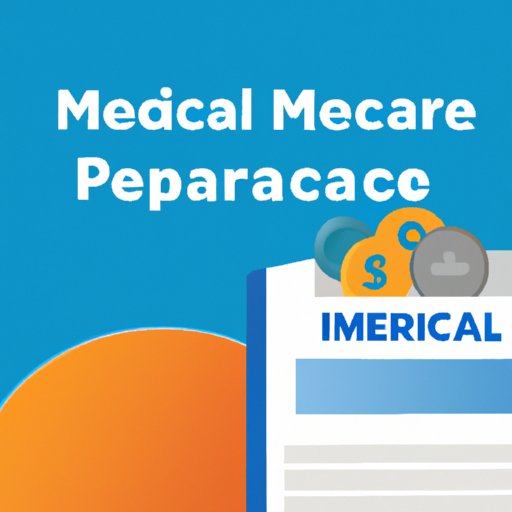Introduction
Medicare is a federal health insurance program that provides coverage to Americans aged 65 and over, as well as some people with disabilities and certain chronic illnesses. It is designed to help cover the cost of medical care and ensure that seniors have access to quality healthcare. In this article, we’ll explain what Medicare is, how it works, and what benefits it offers.
Explaining Medicare: What is Medicare and How Does it Work?
Medicare is made up of four parts – Part A (hospital insurance), Part B (medical insurance), Part C (Medicare Advantage plans) and Part D (prescription drug coverage). Each part covers different types of services and has its own eligibility requirements, benefits, and costs.
In order to be eligible for Medicare, you must be at least 65 years old or have a qualifying disability or illness. If you are already receiving Social Security benefits, you will automatically be enrolled in Medicare when you turn 65. Otherwise, you can apply for Medicare online or by calling 1-800-MEDICARE.
Once you are enrolled in Medicare, you can choose which type of coverage you would like to receive. The four types of coverage are Part A, Part B, Part C, and Part D. Part A covers hospital services such as inpatient care and skilled nursing facility care. Part B covers medical services such as doctor visits, laboratory tests, and preventive care. Part C is an alternative to traditional Medicare and often includes additional benefits such as vision and dental coverage. Finally, Part D covers prescription drugs.

A Comprehensive Guide to Understanding Medicare Benefits
Part A: Hospital Insurance
Part A is the hospital insurance portion of Medicare and covers inpatient hospital stays, skilled nursing facility care, hospice care, and some home health care services. Part A also covers some preventive services such as flu shots and screenings. Most people do not pay a premium for Part A if they have worked and paid taxes for at least 10 years.
Part B: Medical Insurance
Part B is the medical insurance portion of Medicare and covers doctor visits, outpatient services, mental health services, durable medical equipment, and preventive services. Part B also covers some home health care services. Most people pay a monthly premium for Part B.
Part C: Medicare Advantage Plans
Part C, also known as Medicare Advantage Plans, is an alternative to traditional Medicare. These plans are offered by private insurance companies and may include additional benefits such as vision and dental coverage. Part C plans usually require a monthly premium and may also require copayments or coinsurance.
Part D: Prescription Drug Coverage
Part D is the prescription drug coverage portion of Medicare. It covers most prescription drugs, but there are some exceptions. Part D plans usually require a monthly premium, and some plans may also require copayments or coinsurance.
An Overview of Medicare Costs and Coverage
The cost of Medicare depends on the type of coverage you choose and the plan you select. Most people pay a monthly premium for Part B and Part D, and some plans may also require copayments or coinsurance. In addition, you may be responsible for deductibles or out-of-pocket costs for certain services.
Medicare also covers some preventative services such as flu shots and screenings. However, some services are not covered, such as long-term care, cosmetic surgery, and experimental treatments.

The Pros and Cons of Medicare Insurance
Medicare provides access to quality healthcare for seniors, people with disabilities, and those with certain chronic illnesses. It also helps to reduce the cost of medical care by covering a wide range of services. However, there are some drawbacks to Medicare, such as limited coverage, high premiums, and out-of-pocket costs.
Comparing Medicare Plans: Which One is Right for You?
When selecting a Medicare plan, it is important to evaluate your needs and compare different plans to find the one that best meets your needs. Consider the type of coverage you need, the benefits offered, the cost of premiums and other out-of-pocket expenses, and any additional benefits such as vision and dental coverage. You should also consider the provider network and customer service ratings of each plan.
Conclusion
Medicare is a federal health insurance program that provides coverage to Americans aged 65 and over, as well as some people with disabilities and certain chronic illnesses. It is made up of four parts – Part A, Part B, Part C, and Part D – each of which covers different types of services and has its own eligibility requirements, benefits, and costs. Medicare provides access to quality healthcare and helps to reduce the cost of medical care; however, there are some drawbacks, such as limited coverage, high premiums, and out-of-pocket costs. When selecting a Medicare plan, it is important to evaluate your needs and compare different plans to find the one that best meets your needs.
Overall, Medicare is an important program that provides essential coverage to millions of Americans. By understanding how Medicare works and taking the time to compare different plans, you can make an informed decision and find the plan that is right for you.
(Note: Is this article not meeting your expectations? Do you have knowledge or insights to share? Unlock new opportunities and expand your reach by joining our authors team. Click Registration to join us and share your expertise with our readers.)
